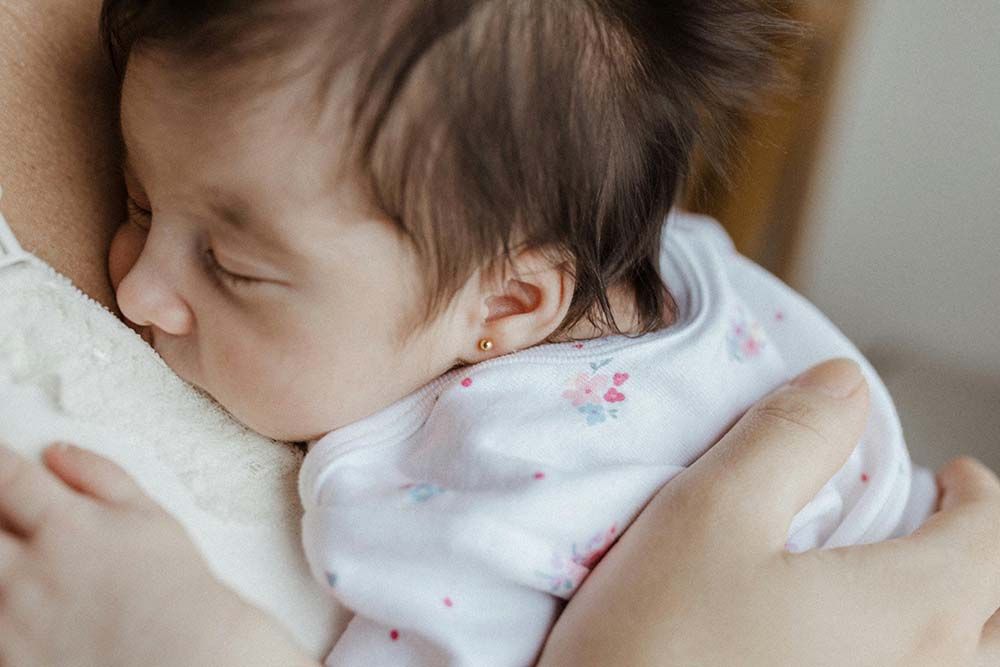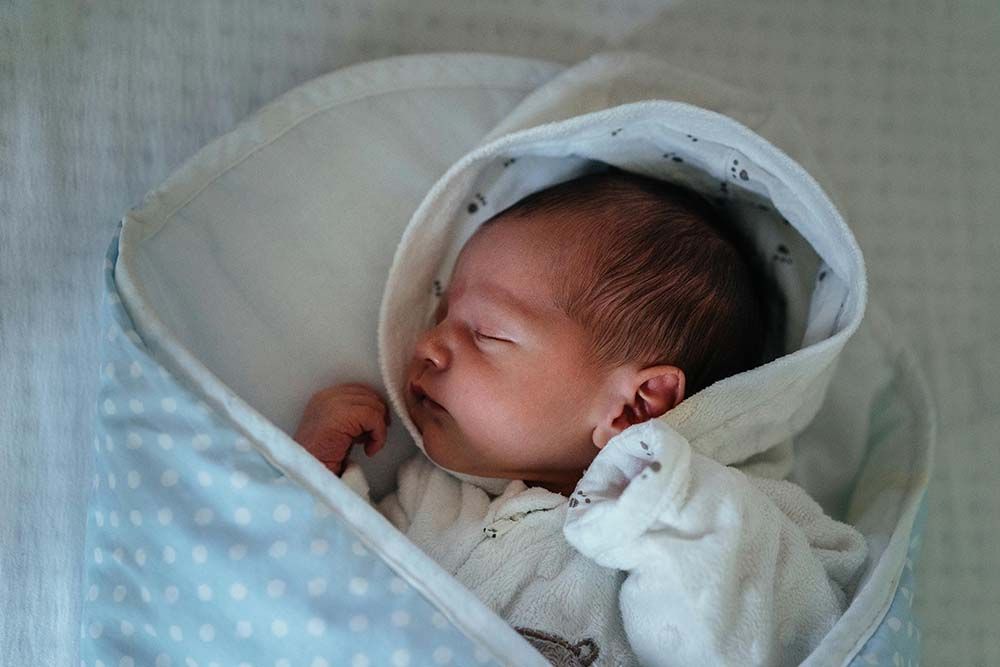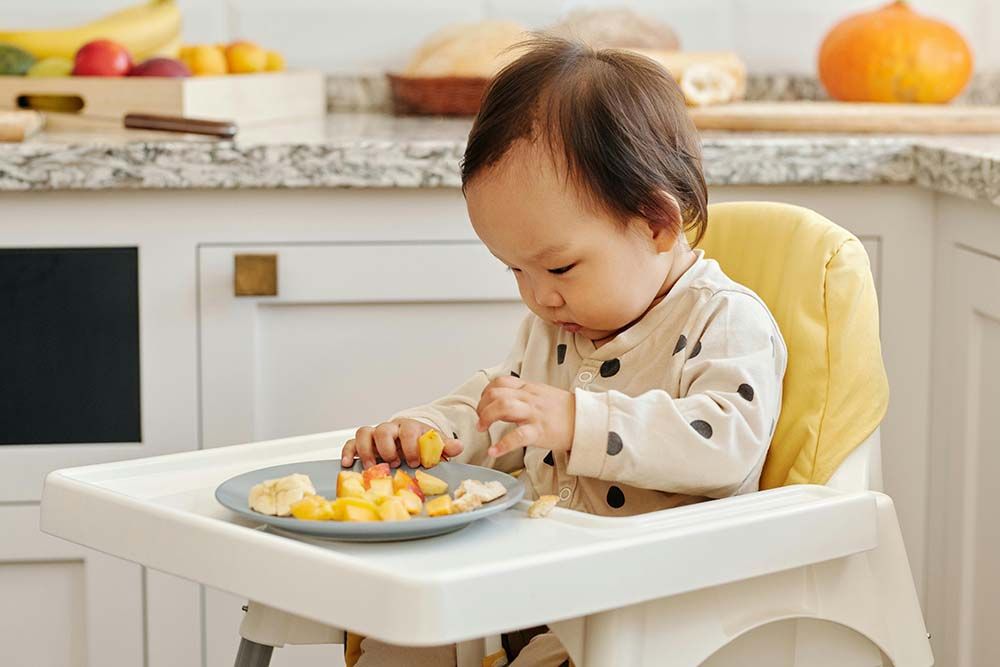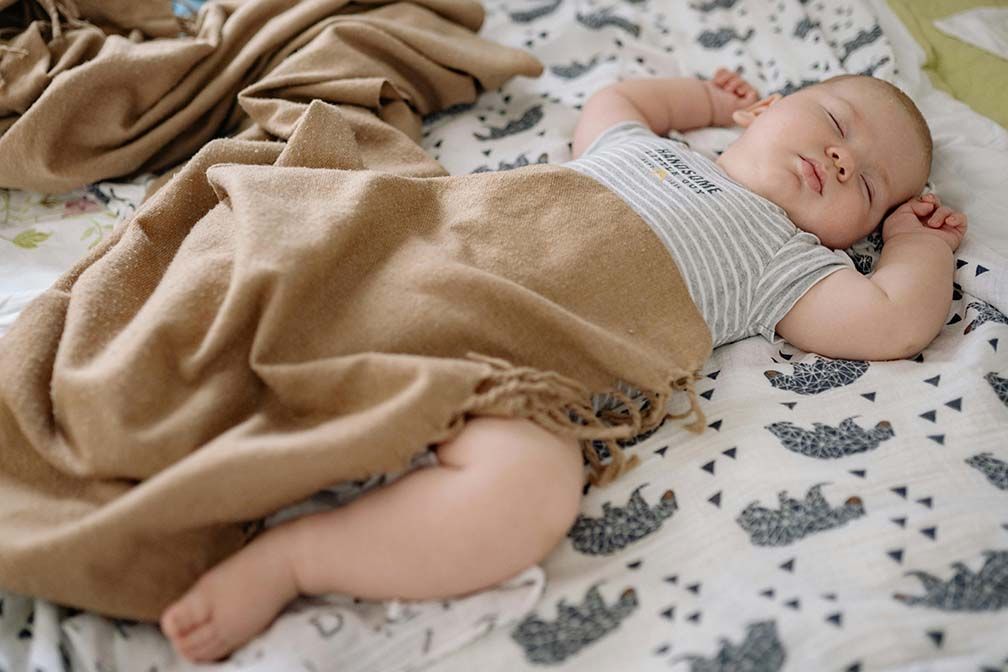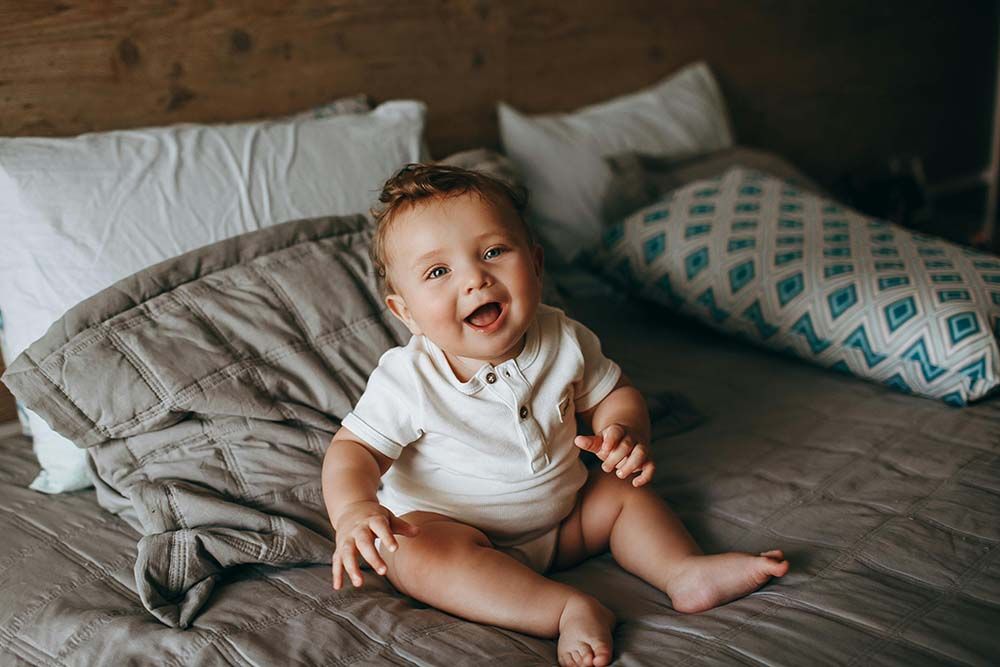

New parents are concerned about everything about their newborns, especially in sleep related issues. Compared to how to make babies fall asleep, it is easier for parents to dress their baby for sleep. However, once considering to comfort and safety, some parents may also feel overwhelmed to this issue. What should s newborn wear to sleep? If you are interested in the answer, welcome to read this article that has archived the most comprehensive views to help new parents better take care of their babies.
IN THIS ARTICLE
What Should a Newborn Wear to Sleep?
How Many Layers Should a Newborn Wear to Sleep?
What Should Baby Wear to Sleep by Temperature?
What Clothes Should Babies Wear to Sleep in Different Seasons?
What are the Signs that your Baby is Hot or Cold While Sleeping?
What Should a Newborn Wear to Sleep?
Available clothing types for newborns:
1. Pajamas
Advantage:
- Good breathability: helps babies keep their skin dry and comfortable.
- Soft and comfortable: friendly to baby's skin.
- Convenience: Good for babies’ movements.
- Easy to clean: suitable for frequent replacement.
- Multiple options: There are different types of fabrics, including pure cotton, bamboo fiber, organic cotton, etc.
Disadvantages:
- Additional insulation measures may be required in colder environments.
- Some designs may limit a baby's freedom of movement.
2. Sleep Sacks
Advantage:
- Provide additional warmth, suitable for colder environments.
- Prevent babies from kicking the covers and reduce the risk of catching a cold.
- Easy to change diapers at night without completely taking them off.
Disadvantages:
- It may overheat in warmer environments.
- Some designs may limit a baby's leg movement.
3. Blankets
Advantage:
- Provide additional warmth, suitable for colder environments.
- The thickness can be adjusted as needed to adapt to different temperature changes.
- Provide different fabrics to choose from, mainly including pure cotton, wool, and down.
Disadvantages:
- Easy to be kicked away by the baby and may require additional securing measures.
- It may overheat in warmer environments.
4. Swaddle
Advantage:
- Help babies feel safe, reduce startle reflex, and promote better sleep.
- Keep the baby's body warm and suitable for newborns.
Disadvantages:
- For slightly older babies, their freedom of movement may be restricted.
- It may overheat in warmer environments.
Factors to consider when choosing clothes for newborns:
1. Material
Choose natural materials such as pure cotton, bamboo fiber, or organic cotton. These materials are soft and breathable, which can reduce skin allergies and irritation. And avoid synthetic fibers Synthetic fibers, which may not be breathable enough and can easily cause babies to sweat and feel uncomfortable.
2. Design
Choose a loose and unconstrained design to ensure that babies can move freely and comfortably. And it’s better to avoid pajamas with buttons, zippers, or decorations, preventing babies from accidentally swallowing or getting injured.
3. Security
Ensure that there are no small parts on the pajamas, such as sequins, beads, etc., which may come off and be accidentally swallowed by the baby. Also, the label location matters a lot too. Choose pajamas with labels located on the outside or designed with label protection to avoid direct contact with the baby's skin, which may cause discomfort.
4. Temperature adaptability
Choose appropriate pajamas based on the season and room temperature. In a warm environment, babies can wear a thin nightgown, such as short sleeved pajamas or lightweight jumpsuits. In a cool environment, babies can wear long sleeved pajamas and pants, or add a thin blanket outside the pajamas.
5. Brand and Quality
Choose pajamas from well-known brands, which usually place more emphasis on quality and safety. Before purchasing, check the quality of the pajamas to ensure that the stitching is firm, there is no odor, no color difference, and other issues.
6. Size
Choose the appropriate size of the pajamas. Being too large may cause inconvenience to the baby's movements, while being too small may limit the baby's activities. Maybe you can choose a slightly larger size to accommodate your baby's rapid growth.
7. Cleaning and maintenance
Choose materials that are easy to clean and quickly dry for convenient daily cleaning and maintenance. And the material should be washable and durable to ensure that pajamas maintain good quality and appearance even after multiple washes.
How Many Layers Should a Newborn Wear to Sleep?
The temperature regulation center of newborns has not fully developed, which means their bodies cannot automatically regulate body temperature like adults. Therefore, parents need to closely monitor the room temperature and the newborn's body temperature, and flexibly adjust the number of layers of clothing for newborns according to the indoor temperature to ensure that the baby is neither too hot nor too cold. Thus, there is no fixed answer. For more details, you can move to the following part to make specific decision for your newborn.
What Should Baby Wear to Sleep by Temperature?
Generally speaking, when the temperature is high, choose lightweight and breathable short sleeved or sleeveless clothing, paired with shorts or thin pajamas to maintain comfort. When the temperature is moderate, the key is to fit in the temperature difference between morning and evening. Thus it is recommended to choose a long sleeved shirt or a thin sweater, paired with a thin jacket and long pants. When the temperature is low, you’d better choose warm long sleeved clothing, thick sweaters, and jackets, paired with warm pants and socks to ensure overall warmth.
Besides, here are some examples for the needed to refer to:
Above 26 ° C: A thin layer of short sleeved pajamas or vest. Plus, a thin and light jacket.
Between 22-26 ° C: A thin layer of long sleeved pajamas. Plus, a thin coat or sleeping sack.
Between 20-22 ° C(Best sleeping temperature): A thin layer of long sleeved pajamas. Plus, a thin blanket or sleeping sack.
At 18-20 ° C: A layer of long sleeved pajamas. Plus, a thicker sleeping sack or blanket.
Between 16-18 ° C: A layer of long sleeved pajamas. Plus, a thick blanket or sleeping sack. Maybe add another thin and cosy sweater.
Below 16 ° C: A layer of long sleeved pajamas and a thick sleeping bag. Maybe, you can add a layer of warm blanket, but be careful not to overheat.

Editor' s Note:

Parents are supposed to monitor baby’s body temperature by touching baby’s neck or back with hands. If you feel cold or sweaty, adjust the clothes accordingly. Thus, the layered wearing method is necessary, which is convenient for parents to adjust clothes according to the temperature difference between indoors and outdoors, making it easy to add or remove clothes at any time.
What Clothes Should Babies Wear to Sleep in Different Seasons?
Different seasons have different temperatures. Thus, you can take “wear by temperature” as reference. But if the weather is too hot or too cold, you can turn help to air conditioner to adjust the temperature in your room. During the process, you should make sure that air circulation in air-conditioned rooms and avoid excessively dry air. If necessary, you can use a humidifier to help maintain indoor humidity. More importantly, ensure that the air conditioning outlet does not blow directly towards the baby to prevent them from catching a cold.
Besides, according to our experiences, there still are two questions that matters parents mostly. Here, we’ll list the answer as well.
Q 1: What should a newborn wear to sleep in the summer at night?
Under the premise of ensuring baby’s comfort and safety, it crucial lies in keeping cool at a summer’s night. To help baby fall asleep smoothly, you can open the air conditioner to keep the sleeping environment in a cool temperature range firstly, and then let your baby wear a light and breathable pajamas to sleep. If it is too hot, you can also fans, but be careful not to blow directly onto the baby. During this process, closely observe your baby’s reaction. If the baby sweats or feels uncomfortable, you can adjust their clothing flexibly to ensure their comfort.
Q2: What should a newborn well to sleep in winter at night?
At this time, keeping warm comes to the first issue. Thereby you can choose warm fabrics like soft cotton or plush pajamas that provide good warmth and breathability. For example, you can let the baby wear a thin underwear, combined with warm pajamas, layered wearing helps regulate the temperature. Considering to the temperature, you can choose to use a sleep sack that is suitable for winter, which can keep the baby warm and facilitate activities. As for the covering bed items, a suitable blanket will be enough, but avoid being too thick to avoid the risk of suffocation.
Q3: Should baby wear cap while sleeping in winter?
Generally speaking, it is generally not recommended to wear a cap on your baby to sleep at night in winter, because there are potential risks, such as:
- Overheating risk: The baby's head is prone to sweating, wearing a hat may cause high body temperature, increasing the risk of suffocation or overheating.
- Affect sleep: If the hat is too tight or not breathable, it may make the baby feel uncomfortable, thereby affecting the quality of sleep.
- Increase risk of suffocation: If the size of the hat is not suitable, or if the hat shifts while the baby is sleeping, it may cover the baby's mouth and nose, increasing the risk of suffocation.
Instead, you can wear appropriate pajamas or bedding for your baby to keep warm. If the indoor temperature is low, other insulation measures such as using thicker blankets can be considered.
But in some special situations, such as in cold rooms without heating equipment, or in special situations such as travel where the living environment has poor insulation conditions, it is appropriate to put a hat on the baby to sleep. However, it is important to choose a hat with good breathability and appropriate size, and to regularly check the baby's condition to ensure that there is no overheating or hat displacement.
What are the Signs that your Baby is Hot or Cold While Sleeping?
Signs of overheating:
- Sweating: The baby's forehead, neck, or back may sweat or even wet their clothes.
- Red face or red ears: The face or ears turn red, indicating a high temperature sensation.
- Impatience: The baby may become restless and have difficulty falling asleep.
- Shortness of breath: Breathing faster than usual, may be accompanied by slight sobbing sounds.
Signs of being too cold:
- Cold hands and feet: The baby's hands and feet feel cold, and the skin feels cold.
- Cold neck or back: Touch the baby's neck or back with your hands and feel cold.
- Curling up the body: Babies may curl up their bodies and try to stay warm.
- Restless sleep: Waking up frequently may lead to crying due to discomfort.
Thus, parents can pay attention to their babies’ condition or behavior, and then make corresponding adjustments in time.
Tips for Safe Sleep
- Correct sleeping position: Always let your baby sleep on their back to reduce the risk of sudden infant death syndrome (SIDS).
- Suitable sleeping environment: Encourage babies to sleep alone in their own crib, and make sure the used mattress is sturdy, flat, and there are no gaps between the mattress and the bed frame.
- Avoid unnecessary items: Do not place pillows, blankets, plush toys, or other loose items on the bed to prevent suffocation.
- Safe sleeping products: Ensure that the baby's pajamas and sleeping bags have no loose straps to avoid the risk of entanglement. Also, make sure that there are no small parts, plastic bags, or other items on the bed that may cause suffocation.
- Monitoring and companionship: Regularly check the baby's sleeping environment to ensure there are no safety hazards. If needed, you can use monitoring devices to keep track of the baby's condition at any time.
- Avoid smoke and harmful substances: Ensure that the baby's sleeping environment is smoke-free and avoid the harm of secondhand smoke. Meantime, keep indoor air circulation to avoid air pollution.
- Establish a regular sleep schedule: Establish a fixed sleep schedule to help babies develop good sleep habits.
- Pay attention to special circumstances: If the baby is sick, parents should pay more attention to baby’s sleeping environment and condition, and consult a doctor's advice promptly. Or when traveling outside, try to keep your baby's sleeping environment similar to home to ensure safety.







